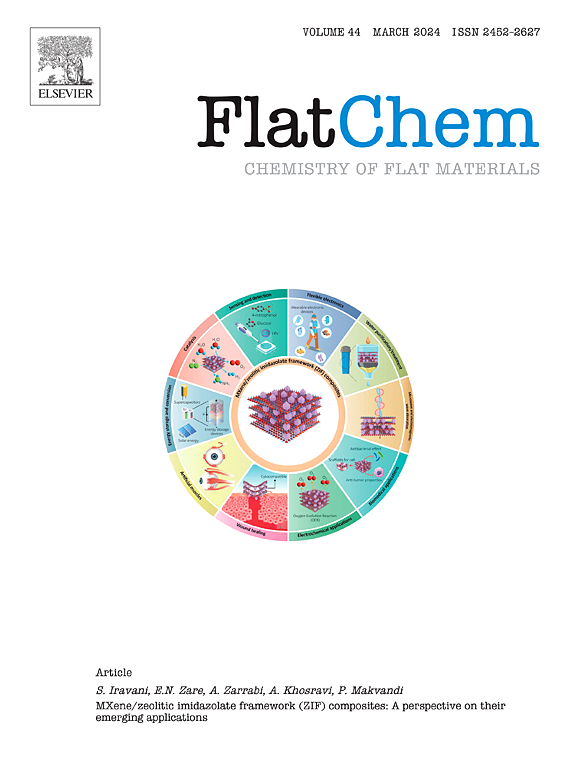Synergistic combinational photothermal therapy-based approaches for cancer treatment
IF 5.9
3区 材料科学
Q2 CHEMISTRY, PHYSICAL
引用次数: 0
Abstract
With millions of new cancer diagnoses annually, there is a pressing need for effective treatments. This review discusses innovative strategies in cancer therapy, aiming primarily at photothermal therapy (PTT) and its synergistic integration with various therapeutic modalities. PTT uses heat produced from light absorption to destroy tumor cells, and recent advancements in nanomaterials significantly enhance its efficacy, stability, and biocompatibility. Key innovations include the development of hybrid polymeric nanoparticles, quantum dots, gold nanorods, silica nanoparticles, and organic and inorganic dyes. These materials improve photothermal conversion efficiency (PCE) through strong near-infrared (NIR) absorption properties, optimizing light absorption and thermal response. Advanced dye-based nanomaterials such as cyanine dyes and porphyrins bear an important role in this enhancement. The review emphasizes the importance of the tumor microenvironment in enabling targeted therapies and the development of conjugated polymers for localized treatment applications. Various approaches to augment PCE are discussed, including surface modification, using plasmonic materials, and incorporating photothermal agents into targeted delivery systems. By elucidating the synergistic interactions between PTT and complementary therapies, this article highlights the potential of nanomaterial-based strategies to revolutionize cancer treatment. The review advocates for multimodal approaches to overcome the drawbacks of current therapies, aiming to enhance treatment efficacy, improve patient quality of life, and minimize side effects.

基于协同组合光热疗法的癌症治疗方法
由于每年有数百万的新癌症诊断,迫切需要有效的治疗方法。本文综述了癌症治疗的创新策略,主要针对光热疗法(PTT)及其与各种治疗方式的协同整合。PTT利用光吸收产生的热量来破坏肿瘤细胞,纳米材料的最新进展显著提高了其功效、稳定性和生物相容性。关键的创新包括开发混合聚合物纳米粒子、量子点、金纳米棒、二氧化硅纳米粒子以及有机和无机染料。这些材料通过强大的近红外(NIR)吸收特性,优化光吸收和热响应,提高光热转换效率(PCE)。先进的染料基纳米材料,如菁染料和卟啉,在这种增强中起着重要作用。该综述强调了肿瘤微环境在实现靶向治疗和开发用于局部治疗应用的共轭聚合物方面的重要性。讨论了增强PCE的各种方法,包括表面改性,使用等离子体材料,以及将光热剂纳入目标输送系统。通过阐明PTT和补充疗法之间的协同相互作用,本文强调了基于纳米材料的策略在彻底改变癌症治疗方面的潜力。这篇综述提倡采用多模式方法来克服现有治疗方法的缺点,旨在提高治疗效果,改善患者生活质量,并最大限度地减少副作用。
本文章由计算机程序翻译,如有差异,请以英文原文为准。
求助全文
约1分钟内获得全文
求助全文
来源期刊

FlatChem
Multiple-
CiteScore
8.40
自引率
6.50%
发文量
104
审稿时长
26 days
期刊介绍:
FlatChem - Chemistry of Flat Materials, a new voice in the community, publishes original and significant, cutting-edge research related to the chemistry of graphene and related 2D & layered materials. The overall aim of the journal is to combine the chemistry and applications of these materials, where the submission of communications, full papers, and concepts should contain chemistry in a materials context, which can be both experimental and/or theoretical. In addition to original research articles, FlatChem also offers reviews, minireviews, highlights and perspectives on the future of this research area with the scientific leaders in fields related to Flat Materials. Topics of interest include, but are not limited to, the following: -Design, synthesis, applications and investigation of graphene, graphene related materials and other 2D & layered materials (for example Silicene, Germanene, Phosphorene, MXenes, Boron nitride, Transition metal dichalcogenides) -Characterization of these materials using all forms of spectroscopy and microscopy techniques -Chemical modification or functionalization and dispersion of these materials, as well as interactions with other materials -Exploring the surface chemistry of these materials for applications in: Sensors or detectors in electrochemical/Lab on a Chip devices, Composite materials, Membranes, Environment technology, Catalysis for energy storage and conversion (for example fuel cells, supercapacitors, batteries, hydrogen storage), Biomedical technology (drug delivery, biosensing, bioimaging)
 求助内容:
求助内容: 应助结果提醒方式:
应助结果提醒方式:


